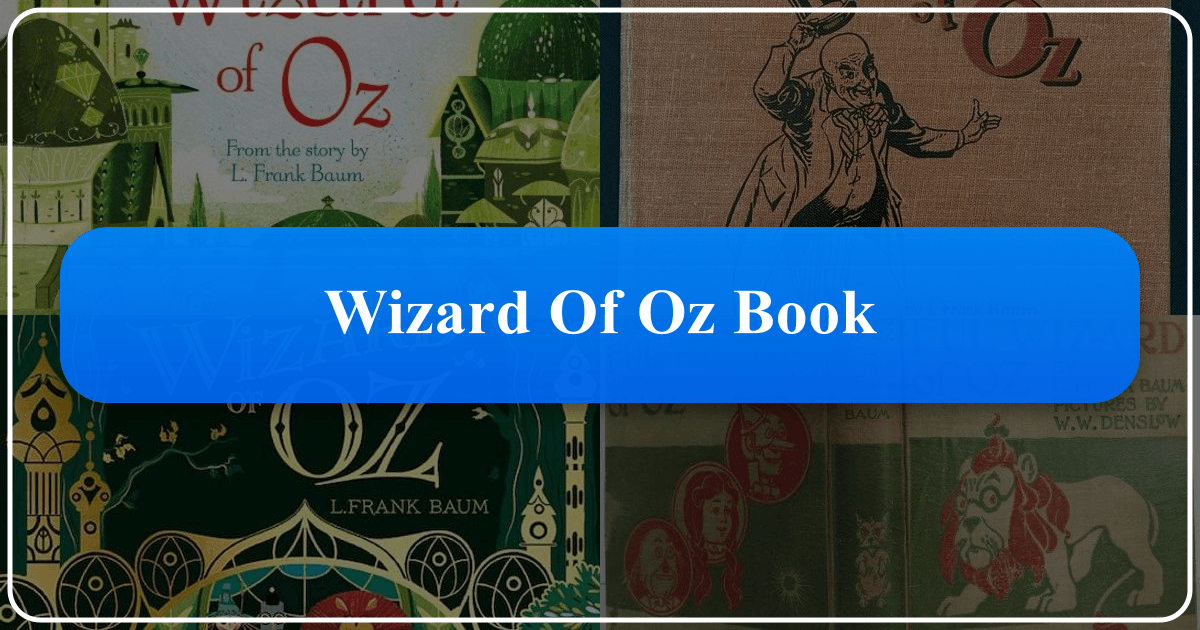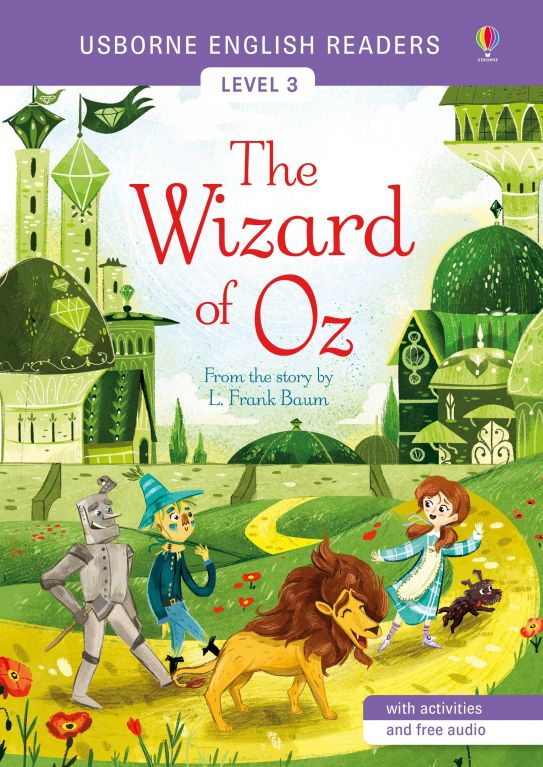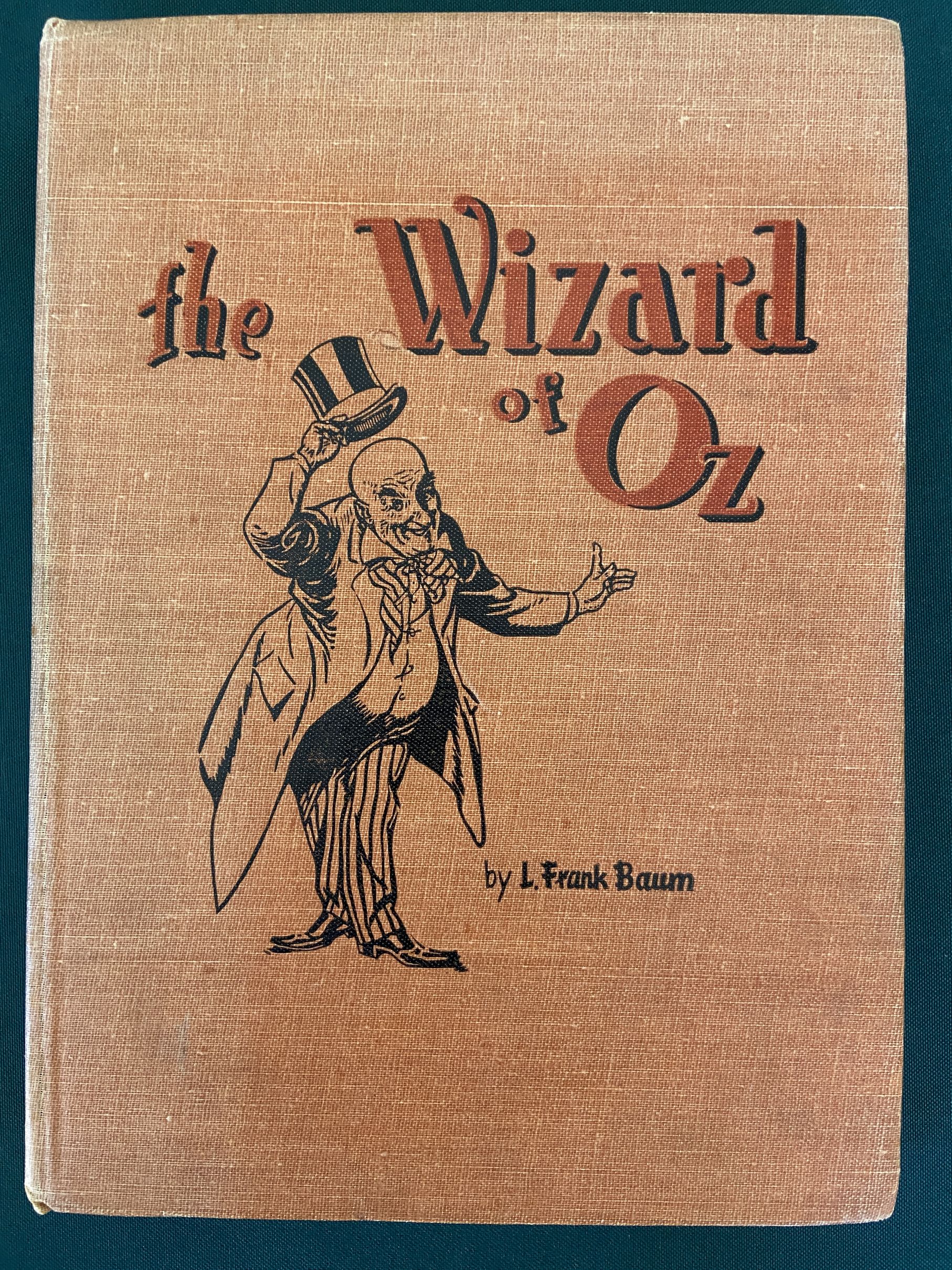The Wonderful Wizard of Oz: A Comprehensive Exploration

L. Frank Baum’s The Wonderful Wizard of Oz, first published in 1900, transcends its status as a children’s book to become a cornerstone of American literature and popular culture. This enduring tale of a Kansas farm girl’s fantastical journey to the magical Land of Oz continues to captivate readers and inspire new adaptations across various media. This article delves into the many facets of The Wonderful Wizard of Oz, examining its publication, plot, creative origins, critical reception, lasting influence, and various adaptations, aligning the discussion with key thematic areas commonly found on literary websites.
The Book: Genre, Classics, and Cultural Significance
The Wonderful Wizard of Oz is primarily classified as a fantasy novel, though its elements of adventure, whimsy, and social commentary blur genre lines. It’s firmly established as a children’s classic, renowned for its imaginative world-building, memorable characters, and enduring appeal to audiences of all ages. Its place within American literature is undeniable, frequently cited as “America’s greatest and best-loved homegrown fairytale” by the Library of Congress, and its influence extends far beyond children’s literature. The book’s themes of home, courage, friendship, and the importance of believing in oneself resonate deeply with readers, contributing to its timeless status. It’s a bestseller in the truest sense, having sold millions of copies even after entering the public domain. Its continued popularity testifies to its enduring literary merit and cultural relevance. The book’s distinct style, with its colorful descriptions and engaging narrative, also sets it apart as a landmark achievement in children’s literature. It paved the way for numerous sequels and other works within the fantasy genre.

Publication and Initial Reception
Originally published in September 1900 by the George M. Hill Company, The Wonderful Wizard of Oz initially enjoyed a remarkable success, selling out its first printing of 10,000 copies before its official release date. This rapid success was fueled by anticipation created by Fred R. Hamlin’s commitment to adapt the novel into a successful Broadway musical. This collaboration between author and stage producer showcases an early example of synergistic marketing in the book industry. The first edition’s striking illustrations by W. W. Denslow were integral to its popularity, being praised as “quite as much of the story as in the writing” by contemporary reviewers. Initial reviews in publications like The New York Times highlighted the book’s engaging plot and beautiful illustrations, predicting a broad appeal to both children and adults who would read it aloud. The book’s early success, however, wasn’t solely dependent on the initial print run. Its subsequent reprintings, driven by the popularity of the stage adaptation, cemented its position as a major literary work.

The Author: L. Frank Baum and His Influences
L. Frank Baum, the author of The Wonderful Wizard of Oz, was a multifaceted individual who brought diverse life experiences to his writing. His background in theatre, journalism, and business provided a rich wellspring of inspiration for his narratives. The book itself draws extensively from his personal experiences, including childhood nightmares, and his fascination with window displays, which likely influenced the creation of the Scarecrow and the Tin Woodman respectively. His profound grief over the loss of his infant niece, Dorothy Louise Gage, directly influenced the naming of the protagonist and the dedication of the book to his grieving wife. This personal connection between Baum’s life and the novel adds a layer of depth, reminding us that even fantastical narratives often arise from the depths of human experience. His creative process involved a close collaboration with W. W. Denslow, whose vivid illustrations shaped the visual identity of Oz and significantly impacted readers’ understanding of the story. The author was also influenced by various fairy tales and the structure of Lewis Carroll’s Alice’s Adventures in Wonderland, yet Baum successfully integrated familiar American elements to create a uniquely American fairytale.

Baum’s Literary Legacy: The Oz Series
The immense success of The Wonderful Wizard of Oz prompted Baum to write thirteen additional Oz books, extending the narrative and further developing the world he had created. These sequels, though less celebrated than the original, broadened the Oz canon and ensured the continued popularity of Baum’s creations. The Oz books, viewed collectively, demonstrate a prolific output and highlight Baum’s ability to sustain a fictional world over time, creating an intricate and expansive narrative. The series, therefore, offers an interesting case study in the development of world-building within a single author’s work, and highlights the sustained engagement of both author and audience with a particular creative concept.
Reading and Learning: Summaries, Educational Value, and Life Lessons
The Wonderful Wizard of Oz provides a captivating narrative suitable for young readers while also offering opportunities for educational enrichment and the exploration of life lessons. The story, while fantastical, presents readily accessible moral and thematic elements. The journey of Dorothy and her friends exemplifies the triumph of courage, perseverance, and friendship in the face of adversity. The characters’ individual quests—the Scarecrow for brains, the Tin Woodman for a heart, and the Cowardly Lion for courage—serve as metaphors for self-discovery and the recognition of inner strengths.
The book’s simple language and engaging plot make it suitable for teaching young readers about the power of imagination, the importance of determination, and the meaning of friendship. It is suitable for use in educational settings, offering a rich text for analysis and discussion. The story can be used to introduce literary devices, explore themes of good versus evil, and inspire creativity through various writing assignments and classroom activities. Its enduring popularity and accessibility make it a valuable tool for fostering a love of reading in children. The central message of self-acceptance and the realization that what one is searching for may already be within them is a timeless life lesson easily adapted for different ages and educational backgrounds.
Plot Summary and Key Themes
A concise summary of the novel highlights its core narrative: Dorothy, a Kansas girl, is transported to the Land of Oz by a cyclone. To return home, she must travel the Yellow Brick Road to the Emerald City and seek the help of the Wizard. Along the way, she befriends the Scarecrow, Tin Woodman, and Cowardly Lion, each with their own desires. They face challenges from the Wicked Witch of the West, but through teamwork and Dorothy’s resourcefulness, they overcome the obstacles. The Wizard reveals himself to be a mere man, and Dorothy ultimately learns that true strength and happiness are found within herself, finally returning home to Kansas. The underlying themes of friendship, self-discovery, and the power of belief resonate across cultures and generations.
Libraries and Archives: Preserving Oz’s Legacy
The impact of The Wonderful Wizard of Oz is evident in its presence within various libraries and archives worldwide. Public libraries hold numerous editions of the book, catering to diverse reading levels and preferences. Digital libraries provide convenient access to the text, allowing readers worldwide to easily engage with the story. Rare book collections might house early editions, offering a glimpse into the book’s publishing history and the evolution of its illustrations. Academic archives often contain materials related to Baum’s life, his creative process, and the book’s various adaptations, offering rich research resources for scholars studying the book’s impact. The preservation of these materials ensures that future generations can explore and appreciate the complete legacy of The Wonderful Wizard of Oz. The accessibility of the text through various platforms further ensures its continued relevance and enduring influence.
Cultural Impact: Adaptations, Awards, and Communities
The Wonderful Wizard of Oz’s influence extends far beyond its original publication. Its remarkable impact on culture is demonstrated through countless adaptations, awards, and dedicated fan communities. The iconic 1939 film adaptation starring Judy Garland remains a timeless classic, defining the visual representation of the story for many. Subsequent adaptations, including stage musicals like The Wiz and various re-imaginings such as Gregory Maguire’s Wicked, demonstrate the book’s capacity to be reinterpreted and reimagined within different cultural contexts. The enduring popularity of these adaptations showcases the book’s adaptability and versatility as a source material, continually providing new perspectives and engaging new generations of audiences.
Awards and Recognition
The book’s cultural status is further evidenced by its recognition through various awards and accolades. Its designation as “America’s greatest and best-loved homegrown fairytale” underscores its unique place in American literature. The fact that such an honor has been bestowed on a book originally intended for a juvenile audience emphasizes the broad appeal and enduring quality of Baum’s work. The many awards and recognitions given to the illustrators of the various editions, and the awards received by adaptations, also demonstrate the book’s significant influence.
Fan Communities and Ongoing Engagement
Numerous fan communities devoted to The Wonderful Wizard of Oz demonstrate the book’s continued engagement with readers. These communities facilitate discussion, analysis, and the sharing of interpretations, creating a rich ecosystem of engagement that sustains the book’s popularity. The existence of these online and offline groups—sharing interpretations and celebrating the book’s legacy— underscores the enduring relevance of the book’s themes and characters. These dedicated communities ensure that the story remains culturally relevant, fostering a sense of shared experience and creating a powerful connection between readers and the world Baum created.
Allegorical and Political Interpretations
Beyond its surface narrative, The Wonderful Wizard of Oz has spurred numerous allegorical and political interpretations, reflecting its adaptable nature and the varied perspectives of its readers. The most prominent of these is the interpretation of the story as an allegory for the late 19th-century Populist movement in the United States, exploring themes of monetary policy and political struggle. These interpretations showcase the book’s capacity to function as a powerful tool for social commentary and political analysis, highlighting its complex layers of meaning. Different readers have identified different layers of meaning within the book’s narrative. These readings, in themselves, enrich and demonstrate the work’s complexity and enduring appeal. The ongoing debate surrounding these interpretations speaks volumes about the book’s flexibility as a cultural artifact and its enduring power to reflect and refract societal concerns. The diverse interpretations—ranging from those focused on political issues to those looking at broader questions of psychology and mythology— underline the story’s enduring resonance within American society and beyond.
In conclusion, The Wonderful Wizard of Oz remains a powerful and influential work of literature, demonstrating remarkable longevity and adaptability. Its enduring appeal rests on a compelling narrative, memorable characters, and a rich tapestry of interwoven themes, influencing various art forms and sparking ongoing critical and cultural discussion. Its presence across multiple media platforms, libraries, and archives, along with the vibrant communities built around it, ensure that its legacy will continue for many generations to come.